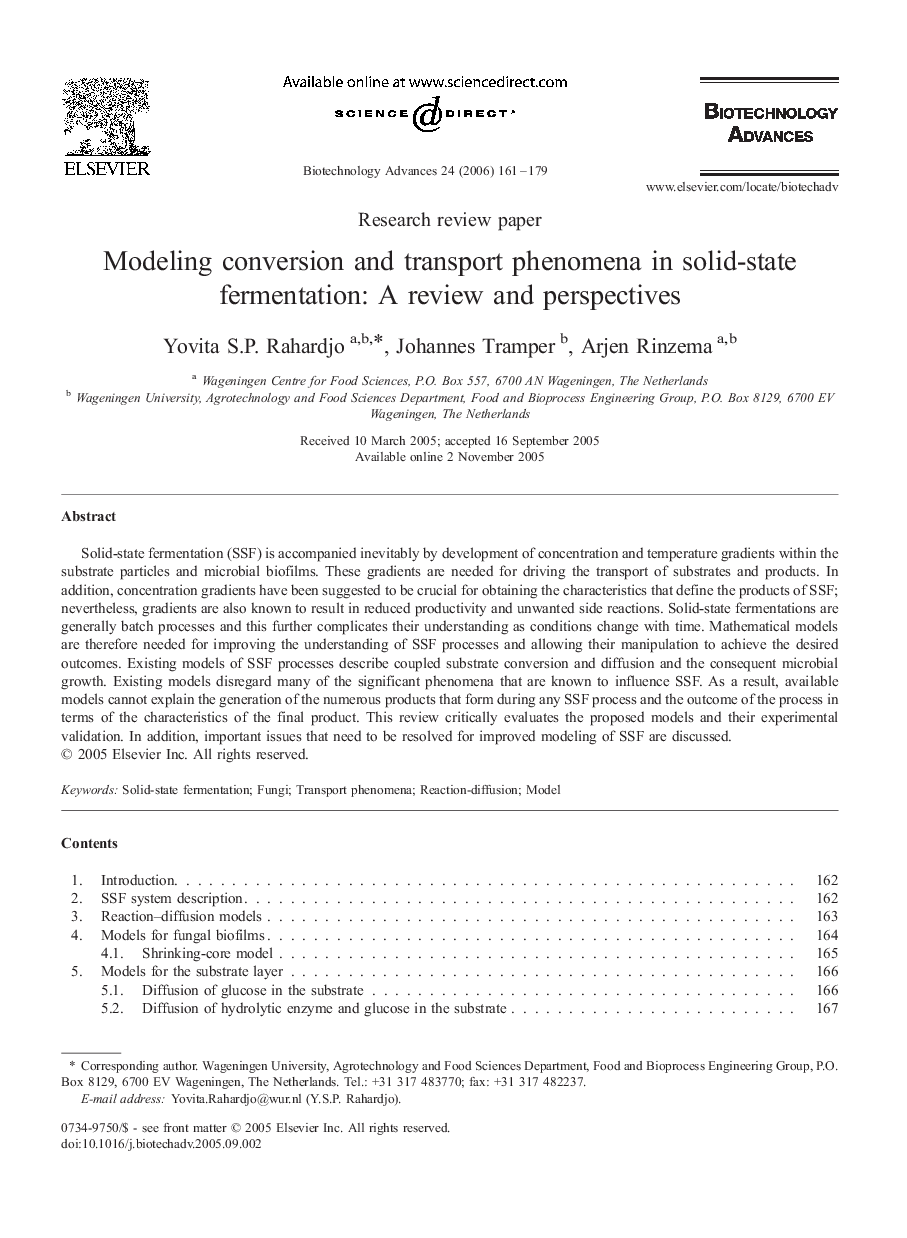| Article ID | Journal | Published Year | Pages | File Type |
|---|---|---|---|---|
| 14872 | Biotechnology Advances | 2006 | 19 Pages |
Solid-state fermentation (SSF) is accompanied inevitably by development of concentration and temperature gradients within the substrate particles and microbial biofilms. These gradients are needed for driving the transport of substrates and products. In addition, concentration gradients have been suggested to be crucial for obtaining the characteristics that define the products of SSF; nevertheless, gradients are also known to result in reduced productivity and unwanted side reactions. Solid-state fermentations are generally batch processes and this further complicates their understanding as conditions change with time. Mathematical models are therefore needed for improving the understanding of SSF processes and allowing their manipulation to achieve the desired outcomes. Existing models of SSF processes describe coupled substrate conversion and diffusion and the consequent microbial growth. Existing models disregard many of the significant phenomena that are known to influence SSF. As a result, available models cannot explain the generation of the numerous products that form during any SSF process and the outcome of the process in terms of the characteristics of the final product. This review critically evaluates the proposed models and their experimental validation. In addition, important issues that need to be resolved for improved modeling of SSF are discussed.
